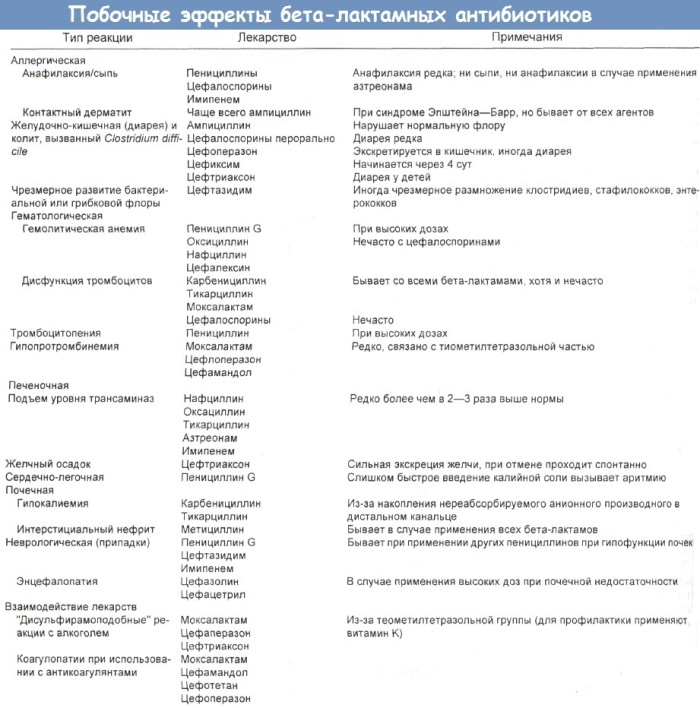Content
- Classification
- Related to the work of leukocytes
- Related to the work of erythrocytes
- Platelet-related
- Associated with malfunctioning plasma cells
- Genetic and acquired
- Rare
- Blood clotting disorders not related to platelet function
- Hemophilia
- Von Willebrand disease
- Video about blood diseases
Blood is a living tissue made up of fluid and solids. The liquid part, called plasma, is composed of water, salt and protein. More than half of the blood volume consists of it, the rest is occupied by solid particles - erythrocytes, leukocytes and platelets. Some diseases affect into one or more of its constituent parts, as a result of which the blood cannot function properly.
In both children and adults, these disorders can be caused by various factors, including genetic predisposition, side effects of certain medications and lack of certain minerals in diet. Perceptible symptoms may differ, depending on the affected blood component or internal organs, as well as on the severity of the pathological process.
At the same time, many people suffering from hematological diseases often feel weakness and malaise in a calm, stress-free state, and dramatically lose weight without any diets. Treatment is prescribed differently, depending on the diagnosis and the severity of the course of the disease.
Classification
Diseases of the blood develop in all cases when problems arise with one or more of its components. Many diseases get their name from the names of the cells and the particles they infect (red blood cells, white blood cells, platelets, or plasma).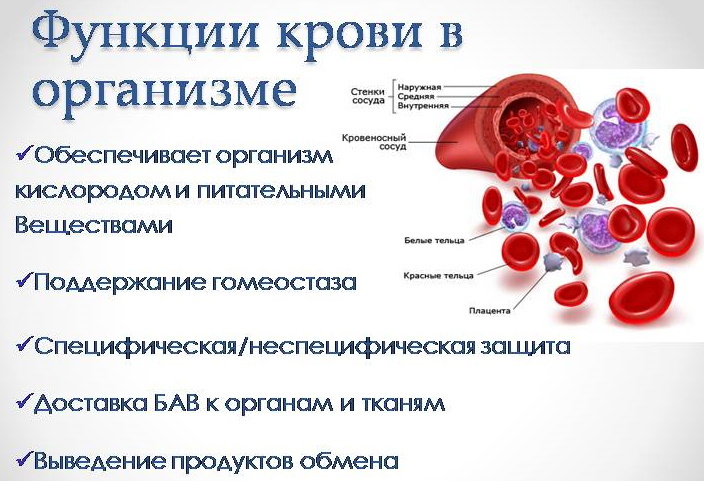
Certain terms are called blood diseases, in which there is a decrease in the production of a certain component or its work is disrupted:
- anemia - when a painful condition is associated with red blood cells;
- leukopenia - if it affects leukocytes;
- thrombocytopenia - when platelets are involved.
The categories of diseases leading to an increase in some components of the blood received the following definitions:
- erythrocytosis;
- leukocytosis;
- thrombocythemia or thrombocytosis.
Related to the work of leukocytes
White blood cells in the body are responsible for fighting infectious attacks.
These cells are formed in the bone marrow and, during growth, are distributed into different types, so that subsequently each of them provides their own immune function:
- neutrophils, bacteria and viruses;
- lymphocytes that kill viruses and regulate the immune system;
- monocytes or macrophages that digest dead or deactivated bacteria, viruses and fungi;
- basophils and eosinophils, which help the body avoid allergic reactions and destroy parasites.
Some diseases affect all types of leukocytes in the blood, while others affect only 1-2 specific ones, and most often neutrophils and lymphocytes are affected.
Blood disease, symptoms in adults for which include frequent infectious ailments, slow wound healing, the onset of descending bruising and unexplained weakness with sudden unreasonable weight loss, usually associated precisely with malfunctioning leukocytes.
Most of these pathological processes are cancer or proliferative disorders, most often caused by infections. In this case, there is a rapid increase in the number of leukocytes circulating in the bloodstream.
However, leukopenia occurs due to a decrease in their volume, and its causes can be:
- infectious damage to the body;
- exposure to toxins;
- certain medications, especially corticosteroids or chemotherapy drugs;
- genetic mutations.
There are 3 main types of blood cancer that affect leukocytes:
- Lymphoma - This is an oncological disease that occurs with the rapid multiplication of lymphocytes and changes in their structure. There are two main types: Hodgkin's lymphoma and non-Hodgkin's lymphoma. Currently, both forms of the disease are treatable, especially with early diagnosis. According to statistics, after such a diagnosis is made, 70-85% of people can live at least 5 years.
-
Leukemias - conditions associated with the accumulation of abnormal (modified) leukocytes in the bone marrow, which interferes with its ability to produce red blood cells and platelets. Leukemias can be acute or chronic, and, accordingly, develop rapidly or gradually. There are various treatments for this condition, but its effectiveness depends on a number of factors (the rate of development of the pathological process, age, concomitant diseases and etc.). According to statistics, 63-65% of patients go into permanent long-term remission.
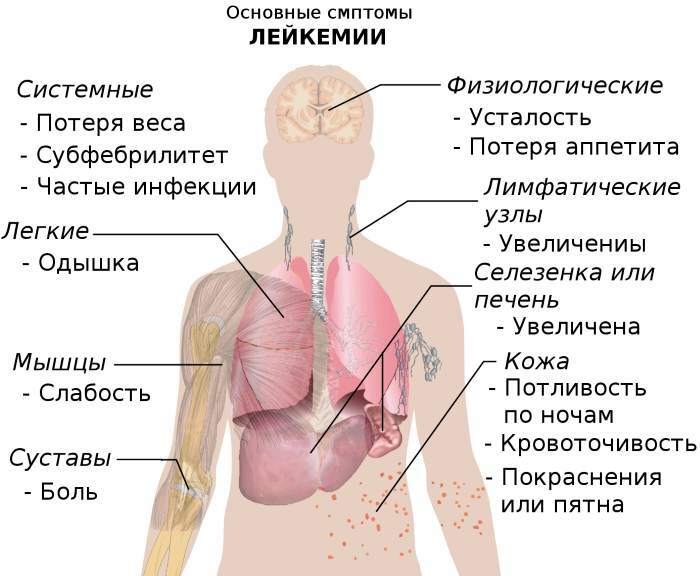
- Myeloma - oncological processes associated with the accumulation of plasma cells in the bone marrow, which interferes with the development and functioning of other blood particles. The most common type of this disorder is multiple myeloma, in which abnormal plasma cells accumulate or form tumors in many places in the bone, or bone marrow. This is the rarest form of cancer (less than 2% of all diagnosed cases), but it is the most difficult to treat (only about 50% of patients go into long-term remission).

Doctors usually diagnose leukemias, lymphomas, and myelomas with:
- medical examination and study of the complete medical history;
- blood and urine tests;
- bone marrow aspiration and biopsy;
- lumbar puncture, in which cerebrospinal fluid is collected for examination;
- imaging tests such as x-rays, computed tomography or PET, MRI and / or ultrasound.
Blood cell cancers that are not yet symptomatic may not require treatment and only needs to be monitored.
As a rule, patients with an aggressive or active oncological process are actively treated using the following methods:
- chemotherapy;
- radiation therapy;
- various operations;
- targeted drug therapy (taking drugs that help increase the effectiveness of chemotherapy drugs or destroy the structural elements of cancer cells);
- transplantation of stem cells and bone marrow cells capable of starting the process of restoring the normal production of leukocytes in the body.
Related to the work of erythrocytes
A blood disorder whose symptoms in adults are unexplained weakness and fatigue, pale skin, shortness of breath, dizziness, or even fainting, heart palpitations, muscle weakness, and difficulty concentrating and remembering information, is most often caused by injury erythrocytes.
One of the most common such diseases is anemia, in which the body does not produce enough red blood cells or they do not work properly.
There are different types of this disease:
- iron deficiency anemia - develop when the body lacks iron or it is not absorbed properly;
- anemia during pregnancy - symptoms of the disease appear in cases when the body needs to increase the number of red blood cells, but it remains at the same level;
- vitamin deficient - are usually caused by low dietary intake of vitamin B12 and folic acid;
- non-hereditary hemolytic - when red blood cells are damaged and destroyed in the bloodstream with abnormal intensity as a result of injury, illness or certain medications;
- hereditary hemolytic - conditions in which red blood cells are split or destroyed faster than the body can replace them with new cells;
- aplastic - develop when the bone marrow stops producing enough blood cells.
If the cause of the anemia is not obvious (such as injury or infection), doctors take the following steps to identify it:
- physical examination of the patient;
- study of individual and family history;
- various blood tests (both general and for counting reticulocytes and determining the composition of peripheral blood);
- bone marrow aspiration and biopsy.
Treatment depends on the cause of the disorder, but usually includes:
- blood transfusion;
- dietary appointments;
- operations;
- taking medications that stimulate the production of new bone marrow cells and red blood cells.
An increase in the number of red blood cells most often occurs in the form of polycythemia vera, a condition in which the body produces too many cells for an unknown reason. Such an excess of red cells usually does not pose a problem, but in some people it is still capable of cause the formation of blood clots, therefore, after identifying such a feature, it should be constantly observed in doctor.
Platelet-related
In adults, the symptoms of blood diseases associated with blood clotting disorders and malfunctioning of platelets are manifested as follows:
- difficulties with wound healing and stopping bleeding in case of injuries;
- any wounds and cuts heal slowly or continue to bleed intermittently without any impact;
- persistent bruising on the skin, without previous bruises and falls;
- recurrent unexplained bleeding from the nose, gums, gastrointestinal tract, or genitourinary system.

Blood diseases associated with a low number of platelets in the blood can occur for a variety of reasons. In most cases, they do not lead to abnormal bleeding or other dangerous conditions.
The most common are:
- Idiopathic thrombocytopenic purpura - a condition in which there is a constantly low number of platelets in the blood for an unknown reason. Usually, there are no obvious symptoms, but sometimes bruises and / or small red spots on the skin (petechiae) appear on the skin. In rare cases, abnormal bleeding occurs that is difficult to stop.
- Heparin-induced thrombocytopenia - a decrease in platelet concentration caused by a reaction to heparin (a blood thinner that is prescribed to many hospitalized people to prevent blood clots).
To diagnose and assess platelet status, most doctors do a physical exam and blood test, and take an individual and family history of the disease. Treatment of thrombocytopenia is usually expressed in replacement therapy with drugs containing the missing elements for normal blood clotting.
Although most disorders in the work of platelets are associated with a decrease in their number or a decrease in activity in the bloodstream, some painful conditions are associated with an excess of them. First of all, this is a state of hypercoagulability - the tendency of the blood to clot too easily. In most people, this condition occurs in a mild form, has no manifestations and is often diagnosed completely by accident. However, some people have recurrent episodes of increased blood clotting throughout their lives, requiring daily blood thinning medications.
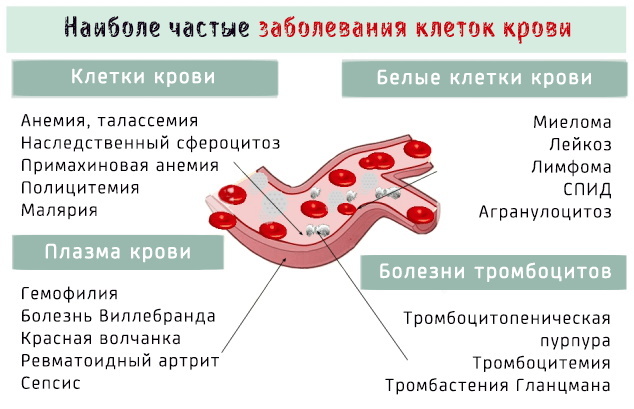
Dangerous conditions associated with an increase in platelet concentration are as follows:
- Thrombotic thrombocytopenic purpura - a rare blood disorder that causes small blood clots to form in blood vessels throughout the body. During this process, a large number of platelets are consumed, and very few of them remain in the bloodstream.
- Essential thrombocytosis (primary thrombocythemia) - a condition where the body produces too many platelets for an unknown reason, but they do not function properly. This leads to excessive blood clotting or prolonged bleeding, or both.
- Deep vein thrombosis A blood clot that forms in a deep vein, usually in the leg. It can move and move through the heart and into the lungs, causing pulmonary embolism.
- Disseminated intravascular coagulation (disseminated intravascular coagulation) - a disease in which tiny blood clots and bleeding spots occur all over the body at the same time. It develops as a result of severe infections, surgery, or pregnancy complications.
Associated with malfunctioning plasma cells
Diseases of the blood associated with abnormalities in the work of plasma are rare. The cause of their occurrence is the excessive multiplication of one type of plasma cells. This disturbs the balance throughout the body and can cause various dangerous conditions.
In a healthy state, plasma cells are present primarily in the bone marrow and lymph nodes in thousands of different types. Each of them produces its own antibodies - immunoglobulins, or unique proteins that help the body fight infection. As a result, a huge number of different antibodies are synthesized to fight numerous infectious and viral attacks.
In plasma diseases, one type of cell multiplies uncontrollably. As a result, their accumulation produces a very large volume of a single antibody (monoclonal) known as the M-protein. Over time, abnormally dividing cells and the immunoglobulins produced by them begin to be present in the plasma in the absolute majority, and the levels of other particles decrease significantly. As a result, the number of other types of antibodies that help fight infections are reduced.
Thus, people with blood disorders associated with abnormal plasma composition are often at higher risk of infections. The constantly increasing number of cells of the same type also penetrates into various tissues and organs and damages them, and their antibodies can damage vital organs, especially the kidneys and bones.
Diseases of the blood caused by disorders of the production of plasma cells are as follows:
- Monoclonal gammopathy of unknown origin - is associated with an increase in the number of cells in the plasma produced from B-lymphocytes. This disease usually does not cause symptoms, so it is almost always discovered by accident when laboratory tests are done for other purposes (such as measuring blood protein). However, monoclonal antibodies can affect nerves and cause numbness, tingling, and weakness in the extremities. People with this condition are also more likely to suffer from bone loss and a tendency to fracture. Monoclonal gammopathy usually does not require treatment, however, if it is accompanied by significant loss of bone density (osteopenia or osteoporosis), doctors may recommend treatment bisphosphonates.
-
Multiple myeloma Is a cancer of plasma cells in which some type of cell multiplies uncontrollably in the bone marrow, and sometimes in other parts of the body. With the development of this disease, people often have bone pain and fractures, as well as kidney problems, a weakened immune system (immunodeficiency), weakness and memory impairments. The diagnosis is made by measuring the amount of different types of antibodies in the blood and urine and confirmed by a bone marrow biopsy. Treatment often involves a combination of conventional chemotherapy drugs, corticosteroids, immunomodulators, and inhibitors of detected antibodies.
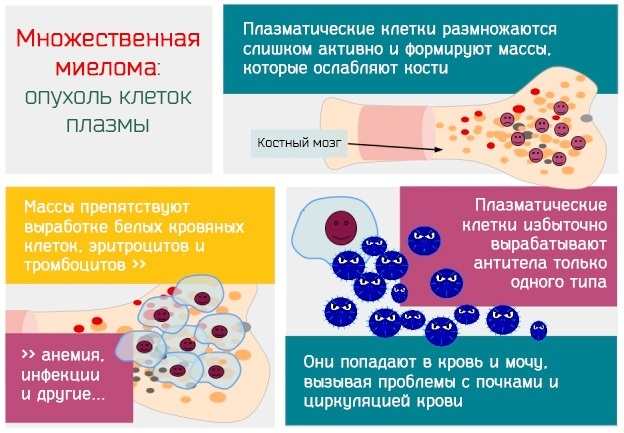
- Macroglobulinemia - develops with a significant increase in the level of cryoglobulins in the blood (antibodies produced by the predominant plasma cells of a certain type). When cooled below normal body temperature, these proteins form large clumps of particulate matter (sediment). Despite the fact that they dissolve when heated, when frozen, they can cause inflammation of the blood vessels (vasculitis), which is manifested by the appearance of bruising,
joint pain and weakness. Vasculitis often affects the liver and kidneys, and in some people the condition can progress to fatal liver and kidney failure. Treatment of macroglobulinemia is carried out with a combination of corticosteroids and drugs aimed at normalizing the immune system and plasma metabolism. In severe cases, chemotherapy is used.
Genetic and acquired
Many blood diseases are inherited. In such cases, altered genes containing a predisposition to the disease are passed on to children from their parents. Several specific genetic mutations, characterized by various blood pathologies, are widely known (primarily sickle cell anemia and some forms of hemophilia and thrombophilia).
In addition, certain genetic factors can also increase the risk of blood diseases. This is especially true for different forms of cancer. A person can inherit a defective gene from his parents, but sometimes the "breakdown" occurs spontaneously, making him more susceptible to the development of certain pathologies.
A blood disorder whose symptoms (in adults and especially the elderly) have not previously been noted in any of the relatives, is more likely to be acquired.
The reasons for its appearance may be different, but the most common are:
- diseases of organs and tissues that support blood circulation;
- constant intake of certain medications;
- nutritional deficiencies.
The factors that increase the risk of developing blood diseases are individual in each case. The manifestation of genetic pathologies and some forms of cancer is likely with a corresponding family history.
Other possible risk factors for blood diseases include:
- aging;
- autoimmune diseases;
- exposure to certain drugs and chemicals;
- liver, kidney, or thyroid disease;
- poor nutrition;
- pregnancy;
- obesity;
- heart diseases;
- high blood pressure and cholesterol;
- smoking;
- injuries and surgeries associated with limited mobility.
Rare
When the normal process of growth and development of blood cells does not function properly, some certain blood particles begin to reproduce in large quantities or in abnormal forms. As a result, cancer and other serious illnesses can develop.
There are 2 types of rare blood disorders, which are divided into subcategories:
-
Myeloproliferative Disorders - occur when the bone marrow starts making too many red blood cells, platelets, or certain white blood cells. These pathological processes are called myeloproliferative neoplasms. Over time, large amounts of excess cells build up in the blood and bone marrow, which can cause bleeding, anemia, or make you feel unwell.
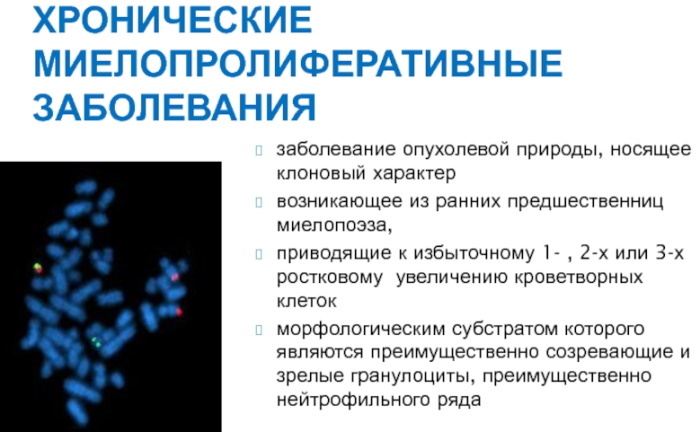
- Lymphoproliferative Disorders - develop when the body produces too many white blood cells (lymphocytes) or when cells behave abnormally. They are found in the lymphatic tissue in the lymph nodes, spleen and thymus. These disorders are called lymphoproliferative neoplasms (LPN) and usually occur in people with weakened immune systems.
| Myeloproliferative Disorders | Lymphoproliferative Disorders | ||
| disease | how is it developing | disease | how is it developing |
| myelofibrosis | due to too many immature leukocytes and erythrocytes, the latter are deformed | hairy cell leukemia | the bone marrow produces deformed white blood cells, which can lead to acute leukemia |
| thrombocythemia | excess platelets | T cell leukemia | |
| eosinophilia | a type of white blood cell that is produced in increased quantities when the body is exposed to an allergen or parasite | ||
| mastocytosis | excess red blood cells | ||
| histiocytosis | excess histiocytes (such as white blood cells) | ||
| paroxysmal nocturnal hemoglobinuria | the bone marrow produces damaged red blood cells, which are rejected by the immune system |
A blood disorder whose symptoms (in adults) are anemia, shortness of breath, pallor, weakness and fatigue, and regular fever, bruising on the skin and inflammation of the sinuses, may be one of the above rare pathologies. Therefore, if difficulties arise in making a diagnosis, it is recommended to undergo a thorough diagnosis. at a specialist (hematologist), where not only blood tests will be prescribed, but also a bone marrow biopsy.
Rare blood disorders are difficult to cure, and existing treatments are attempts to return blood cell counts to normal levels. However, some types of these disorders do not cause any symptoms and may not require any treatment, being limited to observation.
In other cases, and depending on the patient's condition, the following may be required:
- chemotherapy;
- radiation therapy;
- operation;
- targeted drug therapy;
- stem cell transplant;
- blood transfusion;
- dietary changes;
- taking medications that stimulate the production of bone marrow cells and new red blood cells.
Blood clotting disorders not related to platelet function
Clotting disorders are a group of conditions that occur when blood does not clot properly. Under normal conditions, platelets clump together and form a plug at the site of the damaged blood vessel. Proteins in the blood, called clotting factors, then interact to form a fibrin clot (essentially elastic plug) that holds the hardened cells in place and allows healing, preventing damage from opening again.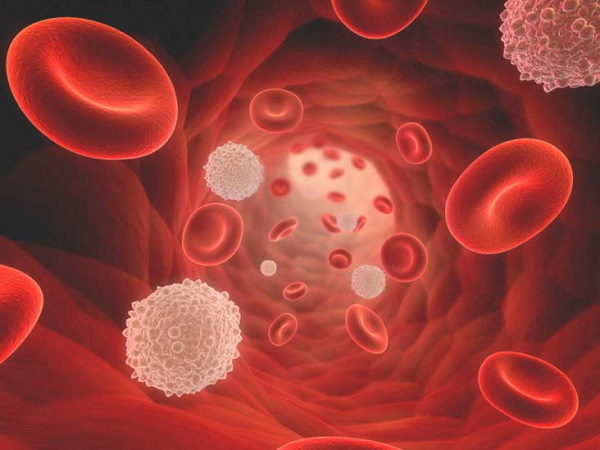
Despite the fact that too strong blood clotting can provoke heart attacks and strokes, the inability to form clots is also very dangerous, as it can lead to excessive bleeding. Such disorders often occur due to an insufficient number of platelets or their poor functioning, but this is far from the only reason. This can also be caused by a deficiency or abnormal structure of certain proteins responsible for clotting, or abnormal structure of blood vessels.
Problems with the production or functioning of platelets are almost always acquired and not genetically inherited. At the same time, other indicated problems usually represent mutations in the organism and are transmitted from parents.
Hemophilia is the most well-known inherited bleeding disorder, although it is relatively rare and affects mainly men. Many more people suffer from von Willebrand disease, which occurs in both men and women. These pathologies occur when certain blood coagulation factors are absent in the blood, and are almost always inherited (although in rare cases, they can develop at a more mature age, if the body produces antibodies that fight hemostatic particles).
Symptoms of blood disorders caused by clotting disorders are usually as follows:
- bruising on the skin, appearing without bruises and falls;
- bleeding gums;
- Heavy bleeding, even from minor cuts, scrapes, or dental procedures
- unreasonable profuse bleeding from the nose;
- profuse menstruation;
- hemorrhage in the area of the joints.
Hemophilia
Hemophilia is a rare inherited bleeding disorder that can range from mild to very severe. It depends on the amount of hemostatic factors in the body.
Hemophilia is classified into types A or B, depending on which type of clotting factor is missing. This disease occurs as a result of a genetic defect fixed on the X chromosome. Women who have a defective gene on one X chromosome (out of two) are called carriers and can pass the disease on to their sons.
Due to the accidental activation of chromosomes, some carriers may also experience mild symptoms of the disease. In fact, women can also get hemophilia, but this is rare (for this, both X chromosomes must be defective).
Since males have one X chromosome, and if it has a defective gene, the development of the disease cannot be avoided. Since blood does not clot properly due to a lack of essential protein, any injury to the patient carries the risk of excessive bleeding. In addition, people with hemophilia can suffer from internal hemorrhages, which over time can damage joints, organs, and tissues.
Previously, people with hemophilia were treated with blood transfusions of factor VIII, but by the early 1980s these products were found to transmit various viruses, including hepatitis and HIV. Thanks to improved screening methods and advances in science, scientists have been able to create synthetic blood factors in the laboratory by cloning specific genes. Therefore, today's replacement therapy methods are cleaner and much safer than ever before.
Von Willebrand disease
Von Willebrand disease is a hereditary disease that occurs in the absence of the same name in the blood. a functioning factor (which helps blood to clot and activates another protein necessary for this - factor VIII).
This condition is usually milder than hemophilia, but can affect people of either sex. Women during menstruation are especially susceptible to its acute manifestations.
The disease is classified into three different stages (1 to 3), depending on the levels of von Willebrand factor and the activity of factor VIII in the blood. The first stage is the easiest and most common, the third is very severe and less common.
When diagnosed early, people with von Willebrand disease can lead normal, active lives. Mild disease may not require any treatment, but should be avoided medicines that can make bleeding worse (such as aspirin and ibuprofen) without first consulting a doctor.
More serious forms can be treated with drugs that increase the level of von Willebrand factor in the body, or with transfusions of blood factor concentrates. but
Proper precautions are often required before surgery, dental treatment or childbirth. To reduce the symptoms of this blood disease during medical procedures, adults are prescribed desmopressin (synthetic a hormone that promotes the release of von Willebrand factors and VIII) and antifibrinolytic drugs that help prevent destruction blood clots.
Video about blood diseases
Blood diseases:


